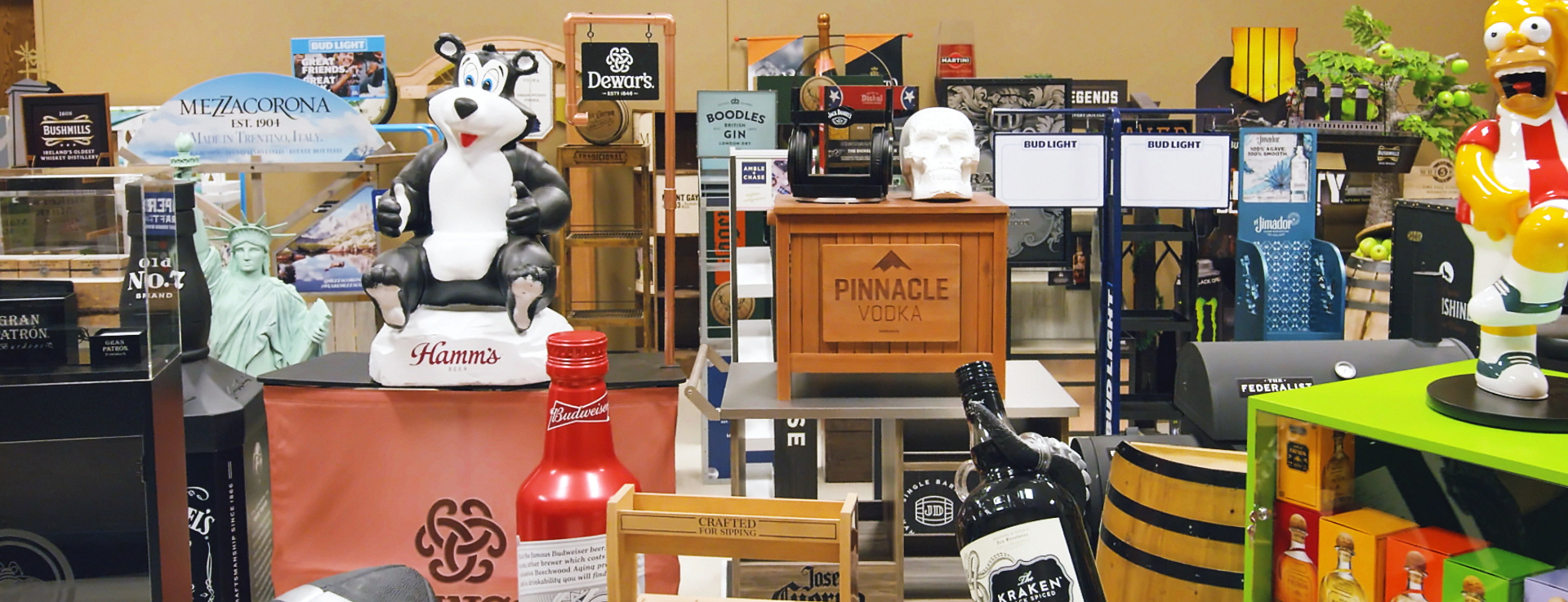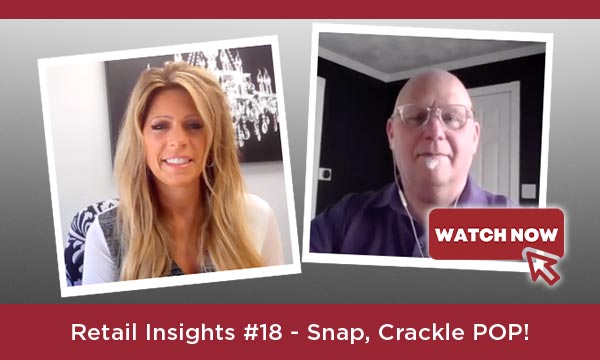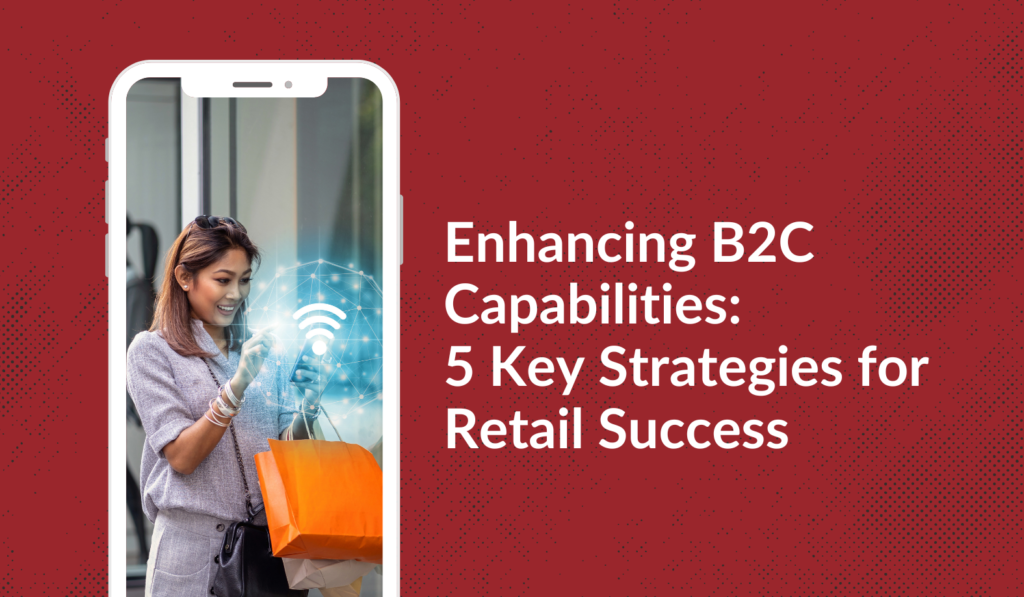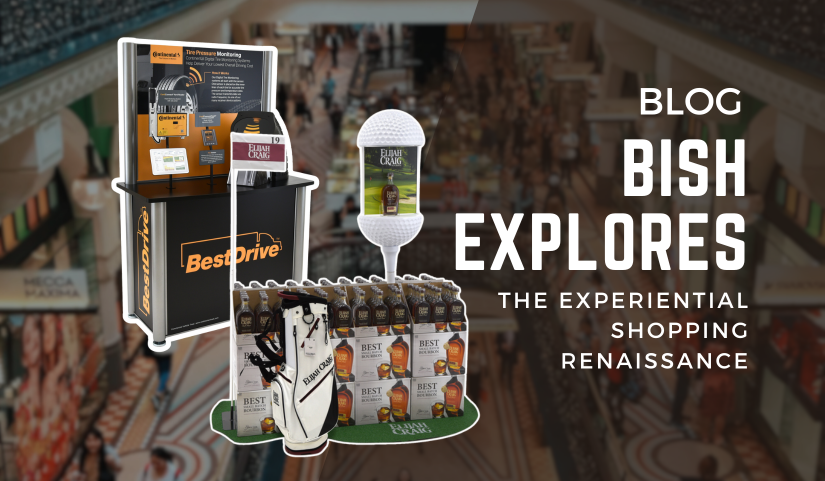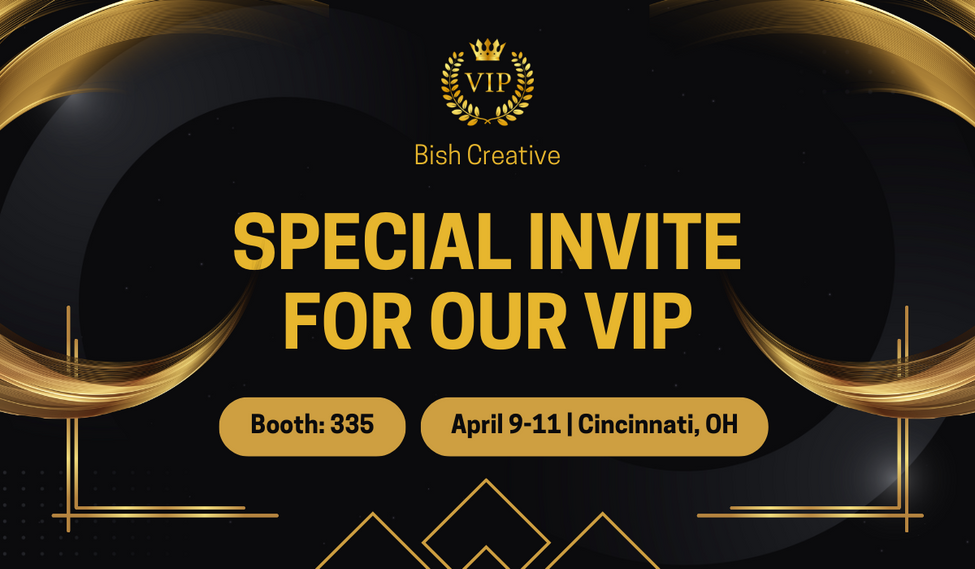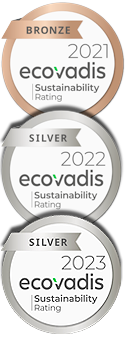Please enjoy our 18th Retail Insights video!
In this video, Lori Taylor, Senior Solutions Manager of Bish Creative, speaks with Kurt Deck, Senior Creative Display Manager of Kellogg’s Company.
This month’s topic is the evolution and importance of retail displays in the market and how the audience is adapting
Thanks for watching!
Retail Insights #18 The evolution and importance of retail displays in the market and how the audience is adapting.
Lori Taylor:
Hi, my name is Lori Taylor and I am a senior solutions manager here at Bish Creative Display. I have had the pleasure of working with Kurt at Kellogg’s for the last couple of years. Hello, Kurt. Thank you so much for joining us today. We’re excited to have you be a part of this month’s Bish Retail Insight video. So thanks for being here.
Kurt Deck:
Yeah Lori, Kurt Deck from Kellogg’s Merchandising Services. Great to be here today. Just a little bit about myself. I’ve been with Kellogg’s for about 34 years. And within that 34 years, I’ve been basically on the sales side, but also, too, on the marketing side. So the nice thing about having the pedigree that I have is I have a lot of exposure how retail works and operates. And then on the marketing side, I can usually really utilize the creativity that is the fun part of the business to come up with solutions and designs when it comes to merchandising. I kind of oversee the merchandising group here at Kellogg. So we work in corrugated displays, metal displays, and plastic. So we cover the whole gamut when it comes to merchandising.
Lori Taylor:
So Kurt, my very first question is, how do you make a Snap, Crackle, POP display?
Kurt Deck:
Great question. And really, it’s not as easy as you think it is. It takes a lot of people with a lot of passion and a lot of dedication to come together to create that display. So really it starts out with an initiative, and a focus, and where we want to drive the business at retail and with certain brands. So really kind of starts with a great brief from our brand teams and what they want to achieve when it comes to moving the brand to the consumer. And that’s kind of where it starts. And then you work with really, really amazing agencies, creative agencies. And also, too, as we call them display agencies like Bish to help us navigate creativity and try to grab that passion that the brand team has in a brief and make it come to life when it comes to display at retail. And that’s how the Snap, Crackle, POP happens at retail displays.
Lori Taylor:
So Kurt, how would you describe the current retail environment?
Kurt Deck:
Current retail environment, Lori, is getting much better than 2020. We’ve learned a lot of crazy lessons from 2020, and it put us in a different direction than we are now. The current environment definitely is getting better, but probably is not going as fast as we’d like it in some markets, but it is changed when it comes to how we present our product at retail. It’s going in a good direction. We’re very happy where it’s gone and we’re looking forward to the future.
Lori Taylor:
So what do you believe are two of the most important reflections on retail from 2020?
Kurt Deck:
Yeah, 2020, it was crazy as we all know. There’s a lot of great lessons that came out in 2020. One was basically the shelf and how important the shelf was when it came to merchandising, and keeping, obviously, product on the shelf when it was really kind of crazy times in the beginning of 2020. And then maintaining it and keeping it to the place where consumers can actually find our product and actually shop it in a crazy environment. The next one would be being nimble and trying to understand the landscape and adjusting our merchandising strategies, and to accommodate to what we receive, and how we had to position our product at retail to the consumers.
Because as you know, there’s a lot of clean store policies out there in 2020 that limited the floor space that displays used to take. So we had to basically look at the landscape, the blueprint of the store, and rethink it, and rethink how the shopper shopped. So it actually opened up a couple opportunities for us to think smaller at some locations, to go bigger in others. So it’s actually a good learning process, but I’m sure glad we’re through it this year.
Lori Taylor:
So how influential is POP retail in the impulse buying world?
Kurt Deck:
When it comes to a POP influence at the retail world, it’s incredibly important, and it’s changing every day. And if you’re not rethinking it, or redesigning it, you’re going to miss the boat. It’s kind of a lifeline of the business. As you know, landscapes changing with retail, people shopping more online, getting delivered to the homes. So when the consumer goes to retail and goes to buy product, it needs to stand out, it needs to be clean and to be clear at retail so the consumer can purchase it. So no longer are the days of just throwing displays out there and hoping that the consumers bump into them. There’s more of a more strategic and more of a sound strategy behind how we design displays and how they’re executed that retail.
Lori Taylor:
So how do brands like Pringles and Cheez-Its continue to be market leaders in such a competitive category?
Kurt Deck:
Yeah, Cheez-Its and Pringles are monster brands when you work here at Kellogg’s. So we’ve got a lot of things that we’re doing to obviously grow the brand, not only in its base, but also to when it comes to innovation. So you’ll see, like in the Cheez-It world product lines, like Snap’d coming out, so competing more when it comes to like the potato chip occasion with like Frito-Lay. So you’ll see things like that coming from Cheez-It.
Pringles is a fun brand. So besides crazy, crazy flavors, you’ll see a different type of advertising coming out for Pringles. We have a real core consumer when it comes to Pringles that we can’t neglect. We’ve got to make sure that we stay current and we have to stay current with the consumer because we know they’re obviously changing all the time. We need to keep up with them. So those two monster brands, there’s a lot of effort here at Kellogg’s to keep those monster brands continuing to grow and be profitable for us. And there is some great, great work in the future for those brands.
Lori Taylor:
So how do you tackle display solutions per category, for instance, mass, grocery, convenience?
Kurt Deck:
Another great question here. And as you called out there, got three different unique categories when it comes to retail. Mass is much different than convenient and general grocery, or retail is different than the mass. So your merchandising solutions have to be different in each one of them. So mass is constantly changing in the direction they’re going. So you need to be able to stick out, and be easy to go through their network, and get out to sales floor. When it comes to general retail, general retail is obviously competing just like everybody else when it comes to online shopping. Also, they’re being a little more craftier when it comes to merchandising. So you’ll see things like smart displays and technology being utilized when it comes to general retail.
And then when you go to convenience, one of the challenges that we’re seeing with convenience, a lot of times convenience stores are tied into gas stations. So everybody has a smartphone nowadays, you can actually go to the pump, put your smartphone in front of the pump and basically start pumping gas. But how do you drive that consumer back into the store to make a purchase? So you really have to work really closely with those retailers to push that opportunity. So when they get into the store, you have to make sure that you’re on a display that really kind of puts your brand in the best position to have that consumer see it so they can make that purchase because they’re not spending a whole lot of time within the store, especially at convenience.
Lori Taylor:
So Kurt, what is a recent display success story that you can share with us? And why was it successful?
Kurt Deck:
Yeah, one of the most successful displays that we’ve been doing recently is kind of what we call the micro displaying. We’ve been working with Bish on this. What we found in 2020 is again, the environment had changed quite a bit, a lot of clean store policy. But there was also, too, a lot of different spaces throughout the store that we still had an opportunity to merchandise. And so what we’ve always looked at here at Kellogg’s is points of interruption. So how can we create points of interruption throughout the store so the consumer can to see our product or tie it in with … Or see it as a tie-in with another brand.
So some of the micro displays that we work closely with the Bish team to develop when it comes to like Pringles displays and the RKT treatment displays. These are small micro displays that can be placed throughout the store. So if the consumer is over by the beer section, they see a small strip of Pringles. There’s an opportunity to sell a can Pringles. Or if they’re upfront wanting to check out and they grab a quick snack, there could be an RKT bar up there. Or you go to another part of the section of the store that they could be buying something for the weekend. We just you in a position that can basically tie your product in with not a whole of real estate.
So the nice thing about these small micro displays is they’re not display that, “Hey, it’s always going to be in the store and it’s always going to push our sales.” It’s kind of a graduation point. So we start with a micro display. We tried to build upon it to get to a larger display while hopefully keeping the micro displays throughout the store also. So I would say that has probably been our most successful thing in the past year and a half, is really kind of really evaluating the market and then coming to the market with a solution that worked best for Kellogg’s.
Lori Taylor:
So what opportunities do you foresee in the ever-changing retail environment for in-store?
Kurt Deck:
As I spoke to some of the questions earlier in our conversation here, the environment is constantly changing. We have to stay on top of that with the consumer, again, doing a lot of shopping online and shopping differently. We really have to have displays that work harder for us. So not just a pretty display is going to cut it anymore. It’s got to be a display that’s thoughtfully designed and well engineered. So when the consumer goes in that store, or when they’re busy, it doesn’t take them a while to find that display. It’s really easy, it’s clean, it stands out. And that can actually be some smart technology involved too, so you can possibly communicate with the consumer too.
So gone are the days, again, as I called out earlier of just tossing out a pretty display out there and saying, “Hey, it’s going to sell product.” We have to be smarter. We have to actually look forward when it comes to technology and design and trying to make sure when the consumer are in the retail market, and they are in the shopping mode, that is easy for them and it makes sense.
Lori Taylor:
So how does merchandising effect the recent trend of people in-store acting as buyers versus shoppers?
Kurt Deck:
Lori, yeah, a continuous theme here, we really have to be smarter. And again, gone are the days when a shopper is just going to be moseying around the store, looking for a deal or looking for a possible meal solution, or they have the time. People are constantly going forward. They’re quite busy, but with technology, it’s also to a lot of people that had the time to do other things. So shopping could be far, far, far lower on their list of priorities.
So when they do shop, they’re coming into the stores as purchasers. They’re looking for something to buy, they’ve done their homework. They know they have a deal in a particular store. They know what they want. They’ve got to find it. So you need to develop displays that can draw them in quickly, either with a neat design from a graphic standpoint, or maybe possibly work with like a beacon technology that draws them in from their phone and tells them, “Hey, the display’s over here that you’re looking for that has the brand that you’re looking for.” So again, the future’s constantly changing, we have to evolve with that and we also have to design and develop displays that accommodate that.
Lori Taylor:
Well, in closing, Kurt, I wanted to thank you for joining us. It’s been a pleasure working with you over the years. It’s been fun. We’ve worked on a lot of amazing projects. And as you spoke on earlier, all of the Pringles and Rice Krispie Treat, and the cereal in a cup and Cheez-It strips, those have been really exciting. It’s fun to see those in the stores. And I look forward to creating more amazing displays with you.
Kurt Deck:
Thank you, Lori, it’s been really great working with Bish. You can see how the team has evolved and has changed. And the displays and concepts and designs that the Bish team is bringing to the table is definitely first-class, and definitely is forward thinking. So that’s why we look to Bish as one of our premium suppliers that we go to to find solutions that help us get to the market and drive our sales. So couldn’t find a better group to work with. So, thank you.

